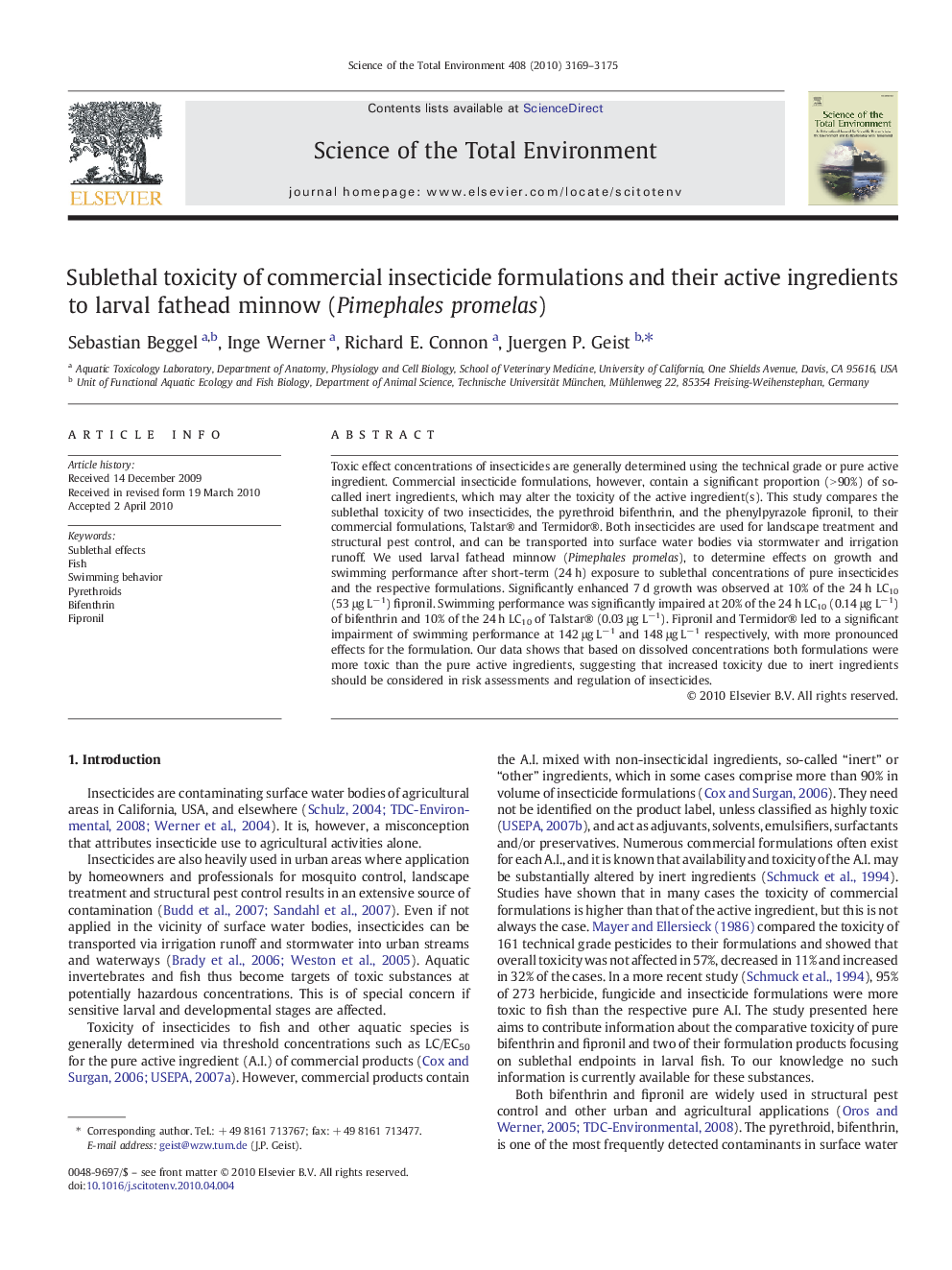| Article ID | Journal | Published Year | Pages | File Type |
|---|---|---|---|---|
| 4430522 | Science of The Total Environment | 2010 | 7 Pages |
Toxic effect concentrations of insecticides are generally determined using the technical grade or pure active ingredient. Commercial insecticide formulations, however, contain a significant proportion (> 90%) of so-called inert ingredients, which may alter the toxicity of the active ingredient(s). This study compares the sublethal toxicity of two insecticides, the pyrethroid bifenthrin, and the phenylpyrazole fipronil, to their commercial formulations, Talstar® and Termidor®. Both insecticides are used for landscape treatment and structural pest control, and can be transported into surface water bodies via stormwater and irrigation runoff. We used larval fathead minnow (Pimephales promelas), to determine effects on growth and swimming performance after short-term (24 h) exposure to sublethal concentrations of pure insecticides and the respective formulations. Significantly enhanced 7 d growth was observed at 10% of the 24 h LC10 (53 μg L−1) fipronil. Swimming performance was significantly impaired at 20% of the 24 h LC10 (0.14 μg L−1) of bifenthrin and 10% of the 24 h LC10 of Talstar® (0.03 μg L−1). Fipronil and Termidor® led to a significant impairment of swimming performance at 142 μg L−1 and 148 μg L−1 respectively, with more pronounced effects for the formulation. Our data shows that based on dissolved concentrations both formulations were more toxic than the pure active ingredients, suggesting that increased toxicity due to inert ingredients should be considered in risk assessments and regulation of insecticides.
